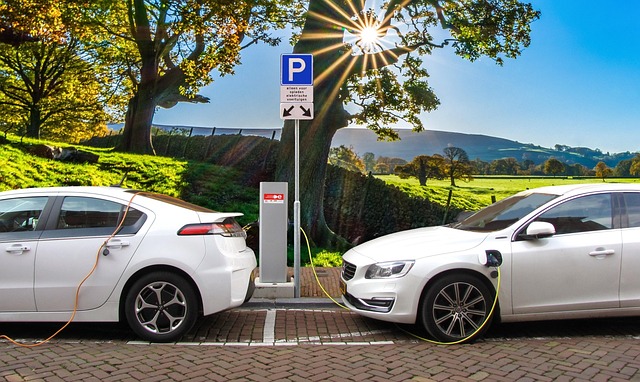Looking to register your car in California? This comprehensive guide breaks down the process step-by-step, from gathering essential documents to receiving your vehicle’s registered title and plates. We’ll walk you through preparing for your visit to a local DMV office or website, completing necessary information and fees, and even navigating the crucial dmv vin verification process. By following these clear instructions, you’ll be on your way to legal California car registration in no time.
- Prepare Required Documents for Car Registration
- Visit Your Local California DMV Office or Website
- Complete Vehicle Information and Fees
- Conduct DMV VIN Verification Process
- Receive Your Registered Vehicle Title and Plates
Prepare Required Documents for Car Registration

Before you start the registration process, it’s crucial to prepare all the required documents for car registration in California. This includes proving ownership through a valid bill of sale or donation paperwork, along with identification documents like your driver’s license and proof of insurance. Additionally, the DMV requires a Vehicle Identification Number (VIN) verification, which can be completed through various methods including a traditional DMV visit, online, or even with a mobile vin verifier for added convenience.
For a seamless experience, consider using a mobile vin verification service to ensure your vehicle’s history is accurately checked. This step involves scanning the VIN and allowing a specialized tool to cross-reference it against national databases, providing instant access to important information like accident reports, recall statuses, and previous ownership details. Once all documents are in order, you’ll be one step closer to officially registering your car with the California DMV.
Visit Your Local California DMV Office or Website

The first step in registering your car in California involves visiting your local Department of Motor Vehicles (DMV) office or accessing their official website. The DMV is responsible for overseeing vehicle registration and ensuring compliance with state laws. One crucial aspect of this process is the Vehicle Identification Number (VIN) verification, which can be easily completed through various methods offered by the DMV.
You can either visit a local DMV branch where a representative will guide you through the registration process and perform a VIN inspection to ensure the vehicle’s authenticity. Alternatively, many counties in California offer mobile vin inspection services, allowing you the convenience of having your car’s details verified at your preferred location. The official DMV website provides comprehensive guides and resources, making it easier for you to understand and navigate the registration process, including how to obtain a clear title and register your vehicle efficiently.
Complete Vehicle Information and Fees

To register your car in California, accurately completing the vehicle information section is crucial. This includes providing detailed data such as the make, model, year, and trim level of your vehicle. Additionally, you’ll need to declare any modifications made to the car, if applicable. The California Department of Motor Vehicles (DMV) requires this information for accurate record-keeping and licensing purposes.
Along with the necessary details, be prepared to pay associated fees. These charges vary based on your vehicle’s type and age, but typically include a registration fee plus a vehicle identification number (VIN) verification cost. A VIN inspection is a critical step in the process, ensuring that the car’s identity is confirmed. You can opt for traditional DMV services or explore convenient alternatives like mobile VIN verification using apps or specialized services, making it easier to complete your car registration smoothly and efficiently.
Conduct DMV VIN Verification Process

To initiate the car registration process in California, the first step is to undergo a DMV VIN verification. This crucial procedure involves confirming the Vehicle Identification Number (VIN) through an inspection by a designated official or a mobile vin inspection service. The primary goal of this step is to ensure that your vehicle meets all safety and legal standards before it can be registered.
During the dmv vin verification, the inspector will thoroughly examine key components of your car using specialized tools. This includes checking the chassis, engine, and other essential parts for any signs of damage or alterations that might affect performance or safety. Once the inspection is complete and passed, you’ll receive a certificate that confirms your vehicle’s compliance, an indispensable document in the registration procedure.
Receive Your Registered Vehicle Title and Plates

After successfully completing the registration process, it’s time to receive your vehicle’s official documents. The California Department of Motor Vehicles (DMV) will issue a registered vehicle title, which serves as proof of ownership. Along with the title, you’ll also obtain license plates for your car. These plates must be displayed on your vehicle at all times while operating on California roads.
To ensure everything is legitimate, it’s advisable to undergo a DMV vin verification process. This involves checking the Vehicle Identification Number (VIN) against the state’s records to confirm the vehicle’s details and history. You can opt for a mobile vin inspection or verification service, making it convenient to complete this step without visiting a DMV office.
Registering a car in California involves several straightforward steps. By preparing the necessary documents, visiting your local DMV, providing accurate vehicle information, and successfully completing the dmv VIN verification process, you’ll be on your way to securing your new vehicle’s registration. Remember to receive your registered vehicle title and plates upon completion to legally operate your car within the state.
